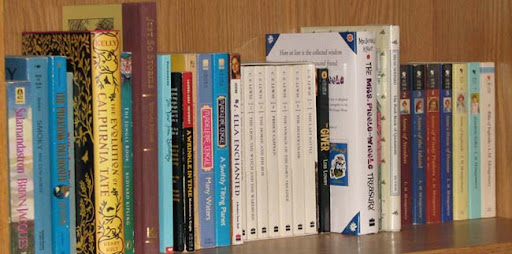Funke, Cornelia. 2002. The Thief Lord. New York: Chicken House. ISBN: 0439404371.
Summary:
Bo and Prosper are orphans, on the run from a mean aunt who only wants to adopt Bo and not his older brother. They end up in Venice, a city their mother loved, and they stumble upon a gang of kids who live in an abandoned movie theater. The leader and provider of this family group is Scipio, a mysterious young boy they call the Thief Lord. But when Bo and Prosper's aunt puts a detective on their trail, several things happen to test this family loyalty, and they also find friends in unexpected places. It turns out Scipio is actually a lonely rich kid who enjoys pretending to be a thief. Although he's never stolen anything except from his own home, he gets a commission to steal an old wooden wing that is the missing piece to a long-lost magical merry-go-round. The slightly complicated ending has most characters getting what they ultimately want.
Analysis:
The book is engaging, building up to a exciting conclusion. Most of the book has no magic or fantasy elements, but the last section introduces a merry-go-round that can turn adults into children and children into adults, and several characters actually experience this. The Thief Lord contains themes that transcend cultures: coming of age, the desire to be what you are not (either older or younger), loyalty, friendship, and more.
Cornelia Funke is a German author, and the setting for this book is in Venice, Italy. The author does a great job of drawing the reader into the setting, with just the right amount of description. Canals, boats, bridges, alleyways, churches, old buildings, pigeons, dusty souvenir shops, masks - it's all there and seems very accurate. Readers get a sense of both the present Venice and a past Venice in which rich and influential families ruled. The author avoids stereotypes of both the Italian culture as a whole and of individual characters, and she presents very balanced characters who have strengths and weaknesses. Italian words are sprinkled throughout the text, with a glossary in the back. There is a map of Venice and some ink drawings at the beginning of each chapter. Not all details are culturally accurate, though; for example, when time is mentioned in the book, it is the 12-hour system, not the 24-hour clock which is used throughout Europe. This was likely changed in translation, but it could have remained and provided an opportunity to discuss how different cultures tell time.
Reviews/Awards:
2003 winner of the Mildred Batchelder award
School Library Journal Best Book of the Year
New York Times Bestseller
ALA Notable Children's Book
"But between kindhearted Victor and his collection of fake beards, the Thief Lord in his mask and high-heeled boots, and a rascally street kid who loves to steal, Prosper's new world abounds with colorful characters. The Venetian setting is ripe for mystery and the city's alleys and canals ratchet up the suspense in the chase scenes." Publisher's Weekly
"A compelling tale, rich in ingenius twists, with a setting and cast that will linger in readers' memories." School Library Journal, starred review
Connections:
Read and talk about Tuck Everlasting by Natalie Babbit, another book that deals with something magical that will help you stay young.
Read other books by Cornelia Funke, such as Inkheart.



